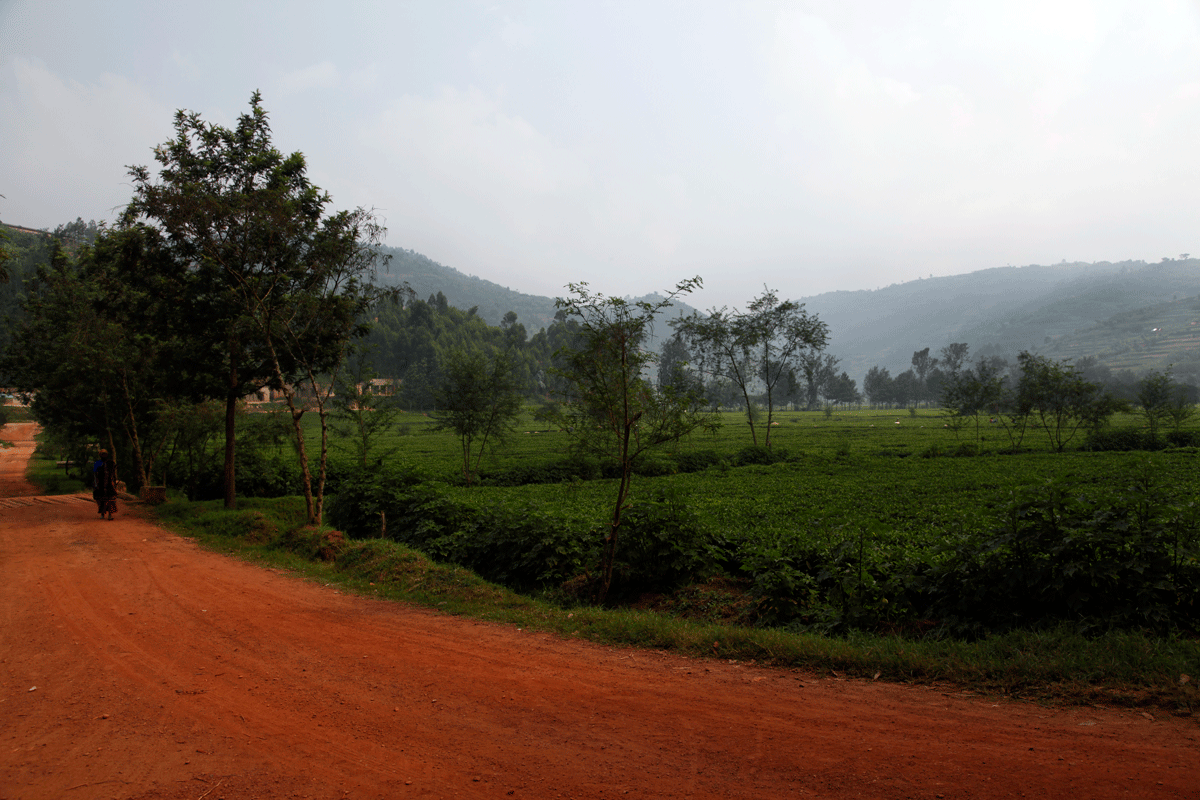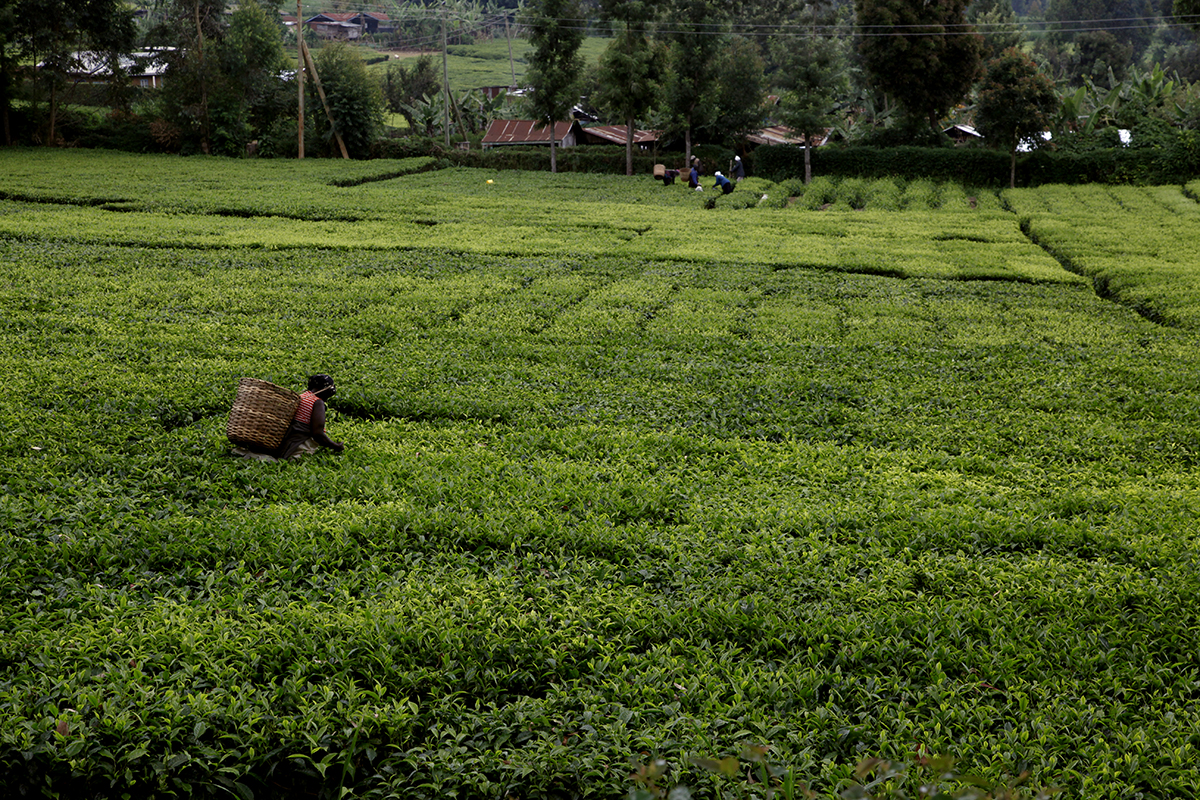Tea is steeped in tradition, for sure, but innovation is not forbidden. In Tanzania, Bente, who had the audacity to plant tea trees on a coffee plantation, cultivates a taste for creativity. Sometimes she hollows out papayas and fills them with tea so that the camellia leaves take on their aroma when they come into contact with the fruit. At other times, she blows hot air onto sliced bananas, infusing the tea with a new fragrance. And she does everything in the most artisanal way possible. Bravo Bente!
From plant to cup
Different pruning methods
No two tea fields are the same, and growing practices vary from one planter to another. As far as pruning is concerned, some thin the tea bushes once a year and level out the branches to form what is known as the plucking table. Others, like our friend Bente in Tanzania, pictured here, use a different pruning method to allow more light to reach the bushes, even the lower branches.
The benefits of passing on your knowledge.
It’s good to learn, but it’s even better if you can pass on your knowledge. I’ve been travelling around the world’s tea gardens for more than 30 years, and during that time I’ve gained enough knowledge that I can share it in my turn. I continue to learn something every day, every time I travel, and I now consider it my primary role to pass on what I’ve learnt. That’s why I ask my colleagues to accompany me on trips, and I plan to do this more. I want them to meet the farmers too, to experience their passion for tea first-hand, to form good relationships with the people who make tea on their mountaintops and who always welcome us with open arms. Here, I’m on the slopes of Kilimanjaro with Chloé and Nathalie and a team of pickers
At the foot of Kilimanjaro
The only plantation in Tanzania that produces teas that can be considered premium is situated an hour’s drive from the town of Moshi. Actually, it’s more of a garden than a plantation. It really is very small, as you can see from the photo. It makes different batches of tea using truly artisanal methods. The factory is run by a woman called Bente. From her house you can enjoy a magnificent view of Kilimanjaro in the early morning or late afternoon.
Tea sommeliers through and through
Palais des Thés makes a number of commitments to its customers including having a good knowledge of each growing region, knowing where and how tea is made, by whom and in what conditions. If one wants to give the best advice, to introduce people to tea in the best possible way, it is essential to understand how to choose tea, how to taste it and how to convey one’s sensory impressions. What motivates my colleagues is to be able to share their passion and help others appreciate tea. They are experts, enthusiasts and guides. They are tea sommeliers through and through.
New regions
I’m often asked if there are teas, regions or plantations yet to be discovered. But a tea sourcer is not the same as an explorer. You don’t suddenly stumble upon tea factories in the middle of the jungle that no one knew existed, or a part of the world where no one had any idea that delicious teas could be made. We know where tea grows. There are some tea-producing countries and regions that are unknown to the general public, but not necessarily to a tea sourcer. Tea is grown in New Zealand, Cameroon and Chile, for example. It also grows in Hawaii, the Azores, and even in France, in Brittany and the Pyrenees. The real work of the tea sourcer is not so much about discovering unknown places; rather, it involves keeping track of plantations that are still in the learning phase, preferably plantations that show strong potential (which means an ideal soil and climate), and supporting them, so that one day we can bring you delicious teas from these new regions.
That’s life
The job of a tea sourcer requires patience. Tea grows at its own speed; you can’t rush it. Manual harvesting requires precision, as does each stage in the processing of the tea. And lastly there is transport, which essentially takes place by boat, truck and sometimes horseback for the first stage in the tea leaves’ journey.
We must also take into account random events – an accident, a strike, political tension and, of course, Covid.
A year and a half ago we bought a delicious green tea and an equally delicious oxidised raw tea from small producers in Shan state in northern Myanmar. No-one knows where they are. They might be on one of those flimsy boats you see on the country’s waterways, unless they haven’t left the farm yet. That’s life.
Dense vegetation
In Georgia, tea grows mainly in the provinces of Guria and Imereti, where the prevailing westerly wind blows in moisture-laden clouds from the Black Sea all year round. These are mountainous, jungle-covered regions. The tea bushes weren’t tended for nearly 30 years, so between harvests, ferns and brambles must be uprooted in order to find them. This is a mammoth task for the small producers and their teams who, in the space of a fortnight, see their Camellia sinensis disappearing under the dense vegetation.
Georgia encourages small producers
During the Soviet era, Georgia produced a lot of tea for the whole of the USSR. But when it gained independence and the troops withdrew, there was nothing left of the production facilities but deserted buildings.
In the space of a few years, its annual tea production of 152,000 tonnes fell to just 1,800 tonnes. But since 2016, tea cultivation has been revived by the Georgian government, which is encouraging small producers to start new farms, produce quality tea and hire employees, with the aim of helping to stem the rural exodus.
Roll out the green carpet
It takes a lot of attention to detail to produce fine tea, harvested from this beautiful emerald expanse. Only the bud and the first two youngest leaves at the tip of the shoot must be picked. The subsequent stages in production also play an important role in quality. Let’s roll out the green carpet for everyone who helps to create such delicious teas.


